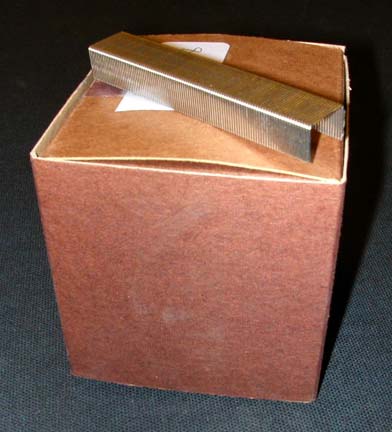Indiana University Libraries Book Repair Manual
Phase Box Rivets/Washers

These are used specifically for phase boxes. Views from both ends of the rivets are shown in the illustration. The "outside view" pictures the ends that will show when the rivets are installed. The core is smaller in diameter than the dress head and thus fits inside it. It simply expands inside the dress head and locks the two halves of the rivet together when the rivet is bucked in the rivet bucker. The hole in the washer is aligned with a hole in the board, on the outside (gray side). The core is pushed through the hole from the inside (white side), so that it protrudes through the board and the washer on the gray side. The dress head is snapped onto the core, the flared end of the core is positioned on the conical pin of the rivet bucker's mandrel, and the rivet is bucked together.
Screw Posts

These are used specifically for post bindings. They are tapped with bolt threads and simply screw together. They are 1/4" in diameter and are available in a variety of lengths, from about 1/2" to 3". Also available are ¼" and ½" extensions. These can be had in aluminum or brass.
Staples

Only stainless steel staples are used in conservation work. The reason for this is of course the fact that they don't rust. Old non-stainless steel staples are removed and replaced. These staples are available in different lengths; those we use are ¼", 3/8", and ½".